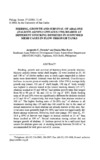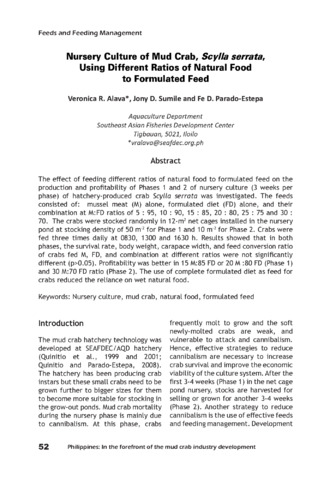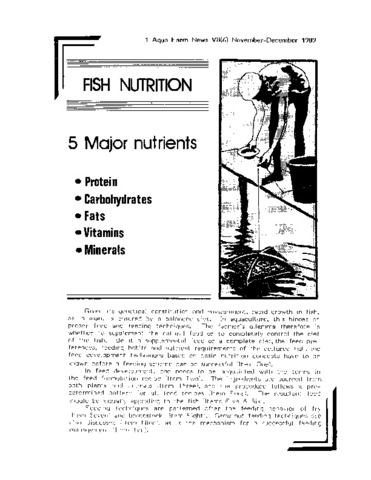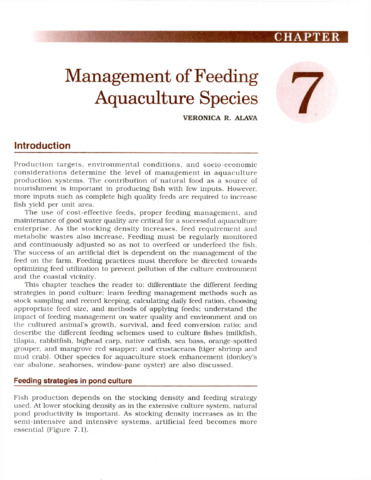Feeding, growth and survival of abalone (Haliotis asinina Linnaeus 1758) reared at different stocking densities in suspended mesh cages in flow-through tanks
Share
Abstract
Feeding, growth and survival of hatchery-bred juvenile abalone, Haliotis asinina (mean initial shell lengths: 32 mm) stocked at 25, 50 and 100 m-2 of shelter surface area in mesh cages suspended in indoor tanks were determined. Animals were fed the seaweed, Gracilariopsis bailinae, to excess given at weekly intervals. After 250 d, avereage daily growth rate (mean: 122 µm d-1 shell length, 156 mg d-1 body weight) was highest in abalone reared at the lowest stocking density (25 m-2 ). Abalone stocked at 50 and 100 m-2 had similar growth rates that ranged from 96 to 98 µm d-1 SL and 123 to 131 mg d-1 BW). Daily feeding rates of 29 and 30% were not significantly different for abalone stocked at 25 and 50 m-2, respectively, but were higher than abalone stocked at 100 m-2. The higher feeding rates of 24-28% day-1 of abalone in all treatments starting day-129 until day-160 could be due to the onset of sexual maturation as most abalone are already mature at this size. Survival rates were generally high (91-98%) and were not significantly different among treatments. However, body size (range: 59.3 mm SL, 57-58.4 g BW) at harvest was bigger in animal stocked at 25 m-2 than those stocked at 100 m-2. Sexual maturation during culture did not hamper growth of abalone. G. bailinae proved to be a sufficient food source for abalone grow-out. A stocking density between 50-100 m-2 is recommended for tank grow-out of H. asinina.
Suggested Citation
Fermin, A. C., & Buen, S. M. (2000). Feeding, growth and survival of abalone (Haliotis asinina Linnaeus 1758) reared at different stocking densities in suspended mesh cages in flow-through tanks. The Philippine Scientist , 37, 31-41. http://hdl.handle.net/10862/1869
Subject
Taxonomic term
Collections
- AQD Journal Articles [1215]
Related items
Showing items related by title, author, creator and subject.
-
Nursery culture of mud crab, Scylla serrata, using different ratios of natural food to formulated feed
Alava, Veronica R.; Sumile, Jony D.; Parado-Estepa, Fe D. (Aquaculture Department, Southeast Asian Fisheries Development Center, 2017)The effect of feeding different ratios of natural food to formulated feed on the production and profitability of Phases 1 and 2 of nursery culture (3 weeks per phase) of hatchery-produced crab Scylla serrata was investigated. ... -
Fish nutrition
Carreon-Lagoc, Julia; Southeast Asian Fisheries Development Center, Aquaculture Department (Aquaculture Department, Southeast Asian Fisheries Development Center, 1989) -
Management of feeding aquaculture species
Alava, Veronica R. (Aquaculture Department, Southeast Asian Fisheries Development Center, 2002)This chapter teaches the reader to: differentiate the different feeding strategies in pond culture; learn feeding management methods such as stock sampling and record keeping, calculating daily feed ration, choosing ...






